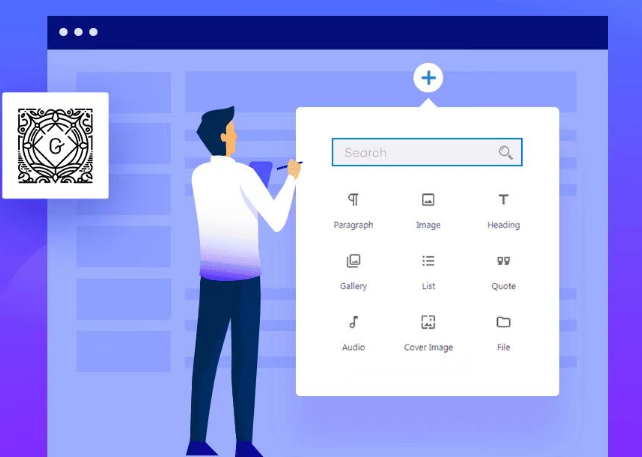WordPress is a highly flexible and open-source content management system, and its dashboard is clean by default, but it can be slightly monotonous for users with specific needs. Fortunately, with the help of a few tweaks and plugins, we can personalize the WordPress dashboard to make it more responsive to specific user needs and enhance the experience.
![图片[1]-如何自定义WordPress仪表板:最佳方法和实用技巧](https://www.361sale.com/wp-content/uploads/2024/11/20241107192400483-Create_a_WordPress_Custom_Dashboard.jpg)
In this article, we'll cover different ways toCustomize WordPress Dashboard, everything from code tweaks to a no-code approach to using plugins.
The Best 5 Ways to Customize Your WordPress Dashboards
1. Customizing the dashboard with code
If you're familiar with the code, you can find out more about it by looking in the theme's functions.php file to add a custom function to achieve the following effect:
- Go to the WordPress Admin Backend::
- Log in to the WordPress backend.
- Open the theme file editor::
- In the left menu, click Appearance > Theme File EditorThe
- Select the current topic of the functions.php file (often referred to as a "subject function" or similar).
![图片[2]-如何自定义WordPress仪表板:最佳方法和实用技巧](https://www.361sale.com/wp-content/uploads/2024/11/20241107191127145-image.png)
- Remove unnecessary widgets
The following code helps to remove the default WordPress dashboard widget by adding it to the functions.php Documentation:
function remove_dashboard_widgets() {
remove_meta_box('dashboard_quick_press', 'dashboard', 'side');
remove_meta_box('dashboard_incoming_links', 'dashboard', 'normal');
remove_meta_box('dashboard_right_now', 'dashboard', 'normal');
remove_meta_box('dashboard_activity', 'dashboard', 'normal');
}
add_action('wp_dashboard_setup', 'remove_dashboard_widgets');This code removes the "quick press","incoming link","at a glance"and"maneuver"Widgets. Widgets can be added or subtracted as needed.
![图片[3]-如何自定义WordPress仪表板:最佳方法和实用技巧](https://www.361sale.com/wp-content/uploads/2024/11/20241107185120798-image.png)
- Add custom widgets
To add custom widgets to the dashboard, such as welcome messages or shortcut links, use the following code:
function custom_dashboard_widgets() {
wp_add_dashboard_widget(
'custom_help_widget', // Widget ID
'Welcome to your custom dashboard', // widget title
'custom_dashboard_help' // function to display the content
);
}
function custom_dashboard_help() {
echo '<p>Welcome to your customized dashboard! Here you will find quick links and resources customized just for you.</p>';
}
add_action('wp_dashboard_setup', 'custom_dashboard_widgets');This can be done in the custom_dashboard_help Add anything to the function, including links, shortcodes, or HTML customizations.
- Styling Dashboards with CSS
Adjust the appearance of the dashboard with a custom stylesheet:
function custom_admin_css() {
echo '
#wpadminbar { background-color: #333; }
.wrap h1 { color: #0073aa; }
';
}
add_action('admin_head', 'custom_admin_css');
The above code changes the background color and title color of the top admin bar. The style code can be modified as per requirement.
2. Add or remove default widgets
It can also be accessed directly from the dashboard via theScreen Optionsto control the display and hiding of the widget:
- Log in to your WordPress dashboard.
- Click on the upper right corner of theScreen Options, open the menu.
- Check or uncheck the widgets to show or hide.
![图片[4]-如何自定义WordPress仪表板:最佳方法和实用技巧](https://www.361sale.com/wp-content/uploads/2024/11/20241107183730610-image.png)
This method is simple and effective, and allows you to quickly adjust the layout of your dashboard.
3. Use of plug-ins to simplify customization
Not wanting to write code, there are manyplug-in (software component)can help you customize the dashboard without code. Here are some recommended plugins:
- Adminimize
Adminimize can show or hide elements in the dashboard based on user roles and is perfect for simplifying the interface for certain users. - White Label CMS
White Label CMS is well suited for branded dashboards that can beReplace WordPress Logo, customize the color scheme and control the display of widgets. It is also possible to create customized login pages.
![图片[5]-如何自定义WordPress仪表板:最佳方法和实用技巧](https://www.361sale.com/wp-content/uploads/2024/11/20241107191328184-image.png)
- WP Custom Admin Interface
This plugin provides an intuitive drag-and-drop interface to adjust dashboard items, hide unnecessary elements and create customized menu structures.
These plugins offer powerful customization and are simple to use, requiring no knowledge of code.
4. Creating shortcut menus
It is possible to add menu shortcuts that point to important parts of your WordPress site, such as Analytics or Documentation. Use the following code:
function custom_menu_links() {
global $menu.
$menu[5] = array( __('site analytics'), 'manage_options', 'https://your-analytics-url.com', '', 'menu-top', 'dashicons-chart-line', '' );
$menu[6] = array( __('document center'), 'manage_options', 'https://your-docs-url.com', '', 'menu-top', 'dashicons-book', '' );
}
add_action('admin_menu', 'custom_menu_links');This code will add a shortcut link to the dashboard menu. The link address can be changed as required.
5. Customizing the login page
The WordPress login page has a simple design by default, but you can personalize it with code:
function custom_login_logo() {
echo '
.login .button-primary { background: #0073aa; }
.login .button-primary { background: #0073aa; }
';
}
add_action('login_enqueue_scripts', 'custom_login_logo'); }If you wish to further adjust the login page, you can use theCustom Login Page Customizerand other plugins to modify page styles directly in the WordPress customizer.
![图片[6]-如何自定义WordPress仪表板:最佳方法和实用技巧](https://www.361sale.com/wp-content/uploads/2024/11/20241107192025897-file-G6J47LNSu1.jpg)
summarize
Whether it's removing unnecessary widgets through code, adding personalized widgets, or using plugins to simplify the interface, the dashboard experience can be enhanced. Meanwhile, creating shortcut menus and customizing the login page can further enhance the branding and professionalism of WordPress.
Link to this article:https://www.361sale.com/en/25478The article is copyrighted and must be reproduced with attribution.























![表情[xiaojiujie]-光子波动网 | 专业WordPress修复服务,全球范围,快速响应](https://www.361sale.com/wp-content/themes/zibll/img/smilies/xiaojiujie.gif)








No comments